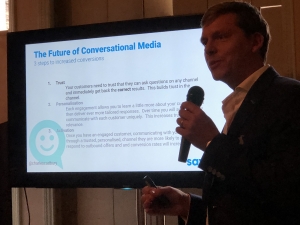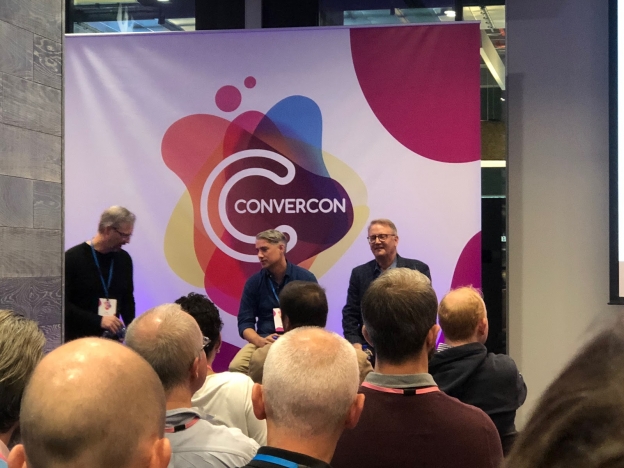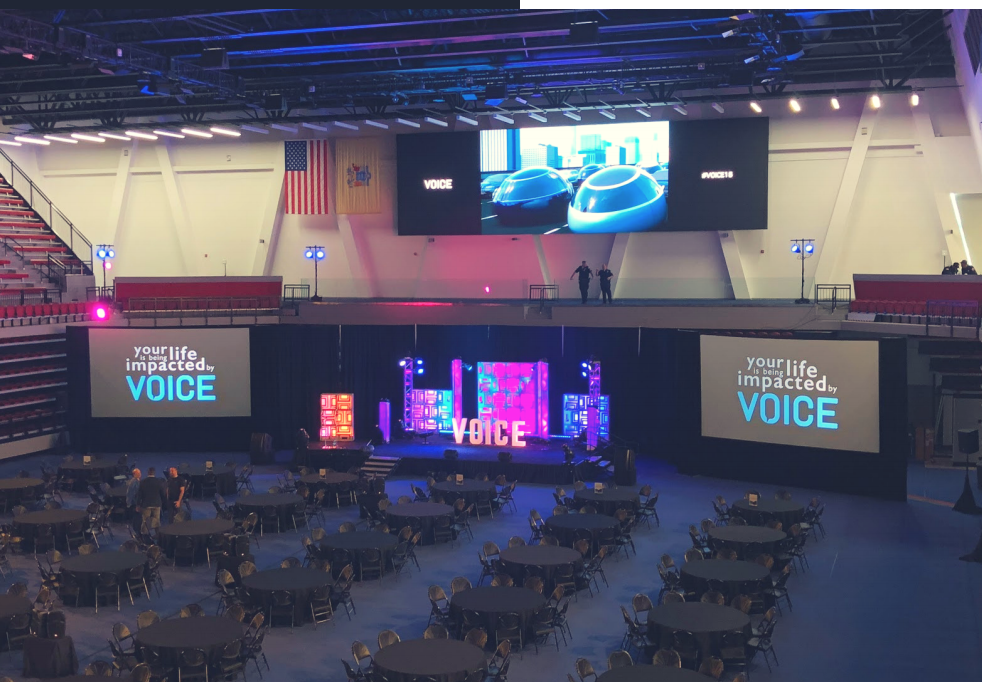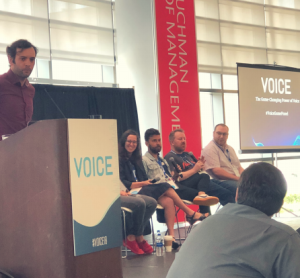It was a last minute decision to go to ConverCon now in its second year in Dublin. I left the family home for Leeds Bradford Airport at 4am to fly to the Emerald Isle. The one day event organised by Paul Sweeney of Webio focused on conversational interface design and featured many thought leaders from the likes of Amazon, Facebook and Microsoft.
WhatsApp now has 1 billion active users and people are more likely in this day and age to message a business than pick up the phone. Approximately 8 out of 10 people sent a message in the last month.
The question is will websites disappear in favour of conversational interfaces?
Think about the billions of pounds spent on branding and packaging each year. If conversational commerce becomes big this will become less important. Brand marketers need to wake up to this fact. The way we interact with voice technology to search and do things means we are moving from brands to intents. Alexa Skills are becoming like verbs as you are always asking them to do stuff.
Who is going to dominate in the intents business?
Microsoft’s Alec Saunders Principle PM for Business AI talked of the future of conversational interfaces. Microsoft is eating its own dog food, building internally facing interfaces. For example, if you send an email to HR the artificial intelligence figures out where it should go and what should happen next. This can be done via email, a chat interface and other ways.
There are some obvious horizontal business processes which you can automate in this way instead of back office people doing this. The benefit is for the business outsourcing bill to be cut. For example, there is a virtual agent who can figure out which Microsoft license you should be on.
Microsoft are finding that chatbots are more popular that FAQs and it gets users to the answers much more quickly. If you add text and messaging instead of voice in the contact centre then efficiency goes up. Furthermore, job satisfaction goes up. There is a huge repetition in asking questions in a call centre or helpdesk. Virtual agents can handle the messy, common questions and humans get involved with more complex issues.
Chatbots are good at handling peaks with a minimum level of service, for example, the annual tax filing or university clearing when call centres’ lines traditionally get jammed. In a talk by Oracle a chatbot was used on the careers section of a website to guide a job seeker into the correct job based on a series of questions on skills and experience.
Intercom, a Russian company specialising in chatbots, is all about making the internet business personal. Websites with use of live chat have users which are 82% more likely to convert. Replying to people on chat is expensive so you need bots. Replying to someone in 5 minutes on live chats means you are a lot more likely to close a deal. Personable replies on chat are about context. Bots must take over the simple tasks and humans can get involved when the complexity is too much for the bot.
How do you handover from bot to human?
You should always be clear on live chat whether you are speaking to a bot or a human. Businesses top reasons for using chatbots are customer experience, cost effectiveness, scalability and compliance. The scope and order of how people talk are complex and random. The context of a conversation is important e.g. their previous experience e.g. their locations. In conversational design, you can give nudges and hints to people based on what they have done previously.
David Low Head of Alternative Channels at Skyscanner says the ultimate goal is for Skyscanner to book a flight before the person realises they need to book one. This can be done with people’s intents, conversational history and artificial intelligence. Seamus White, Founder of Granite Digital explains that once the consumer expectation is there to use live chat and voice commands then the floodgates will open on conversational computing. For example, when mobile apps first came out most people didn’t know what it was but when the consumer expectation became real mobile apps became commonplace.
Clodagh Brenna, Trend Analyst at Foresight Factory gave a talk on personalised conversations and the future of customer interactions. Clodagh stated that 80% of buying decisions are emotional. Empathy is a route to understanding consumers which then leads to greater trust and better experiences. People like sharing emotions and generate emoticons. When communicating with a consumer you need to speak to people’s aspirations as this resonates.
Mitch Lieberman, Analyst at Opus Research followed comparing the customer journey with business processes. The context of a conversation is important e.g. their locations or prior conversations. What questions can not be answered by Alexa is where the opportunity lies.
Your goal is to reach conversations which help reduce friction and the communications mismatch. The hard part is what conversation to have and then how to have that conversation. In conversational commerce, you need the conversation history and context. Keep asking clarifying questions until you get to the answer. How many turns until you get handed off to a human. A small number of intents gives you what most people want to do. You need journey analytics to recommend what conversations to have in the future.
For great conversational design, you need dialogue design. This is best done by using notes on a wall. You must find the voice of the user. You must also cater for the what if, what if, what if scenarios. Further thought needs to be given to if you are happy how would you say it and if you are angry how would you say it?
So will the website disappear? We could be moving to a world of multi skilled chatbots with bots calling bots! The rise of voice first technology and artificial intelligence is only going further towards this endeavour. With over 50 years of artificial intelligence computing, we are now reaching a period of time when science fiction is becoming science fact.








